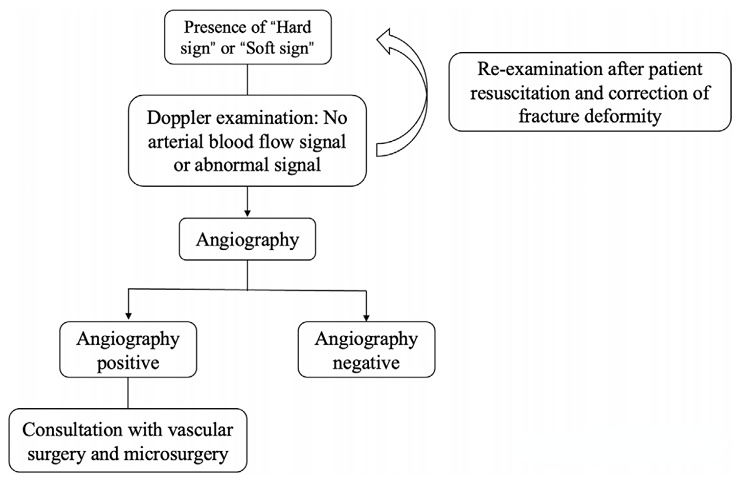The most common limb trauma in orthopedic emergencies has the possibility of potential vascular injury, such as knee joint injury is prone to damage the popliteal artery, forearm injury is prone to damage the ulnar artery, etc. Studies have shown that 1.6% of adult limb trauma is combined with vascular injury. If vascular injury is not diagnosed and treated in time, it will be disastrous for patients. Therefore, it is crucial to diagnose and treat suspected vascular injury in orthopedic emergency limb trauma early.
There are currently “hard signs” and “soft signs” to judge the signs of vascular injury. Hard signs include:
Observable arterial pulsation bleeding;
A murmur is heard in or near the artery;
Painful arterial tremor;
Typical signs of limb ischemia: pain, pallor, disappearance of arterial pulsation, paresthesia, paralysis and prolonged capillary congestion time.
If the above hard signs appear, in theory, timely surgical exploration and treatment are required, while soft signs include:
Previous history of arterial bleeding;
Fracture, dislocation or penetrating injury on the vascular path;
Weakened arterial pulsation compared with the healthy side;
Abnormal neurological function.
However, the sensitivity and specificity of physical examination alone are questionable, and the gold standard test for vascular injury: angiography, is difficult to perform for emergency patients in most hospitals. To this end, Professor Wu Xinbao’s team from Jishuitan Hospital recently published an article in the OS magazine, introducing the use of physical examination + handheld vascular Doppler ultrasound to assess limb vascular injury, which has good sensitivity and is easy to operate.
All patients with “hard signs” and “soft signs” were examined with Doppler ultrasound. If vascular injury was suspected, angiography was performed. If no suspected injury was found, the patient was re-evaluated after fracture reduction or correction of limb deformity.


The study included 55 patients (58 limbs) with suspected vascular injury, 3 limbs underwent angiography and the results were negative, and 53 patients (55 limbs) had positive angiography, of which 10 did not undergo surgical exploration, 38 underwent surgical exploration + vascular suture, and 5 underwent amputation. The outcomes of each group of cases are shown in the following figure:


▲ The picture shows a patient with suspected popliteal artery injury and tibial plateau fracture, who underwent emergency exploration + vascular repair and secondary internal fixation surgery.
Among all arterial injuries, popliteal artery injury is most common due to knee injury:

In short, for limb trauma, the first step is to preliminarily assess whether there is vascular injury through “hard signs” and “soft signs”. For patients suspected of vascular injury, vascular B-ultrasound examination should be performed as much as possible. If physical signs + B-ultrasound examination indicate vascular injury, the gold standard “angiography” examination should be performed, and then necessary treatment intervention should be performed. Especially for fractures of the knee joint and below the lower limb, the popliteal artery and below are very easy to be injured, and early diagnosis is required.
[Statement]: The concepts, technologies, and principles shared on this platform are all publicly available journals, published books, or online platform materials. The copyright belongs to the original author. The platform only organizes, summarizes, and shares them for learning reference. This platform is not responsible for the authenticity of the content and the effectiveness of the technology. The related medical behaviors generated based on the content pushed by this platform have nothing to do with the platform. Please choose carefully. If there is any infringement, please contact us to delete it.




